Preface
Overview
Capernaum
Weapons Of Warfare
Nazareth
Playground
Samaria
Shiloh
Jordan River
Jericho
Calvary
Jerusalem
Bethlehem
Southern Desert Plains
Mount Sinai
Conclusion
This vision was given in December of 2017. By 'vision', I do not mean a literal appearance of anything. I think in pictures. This all formed in my head over a period of several weeks.
While contemplating what to do with the idea, I read a passage from the book of Habakkuk:
"Write the vision, and make it plain upon tables, that he may run that readeth it."
Thus, I set about to write what I saw. This is the result.
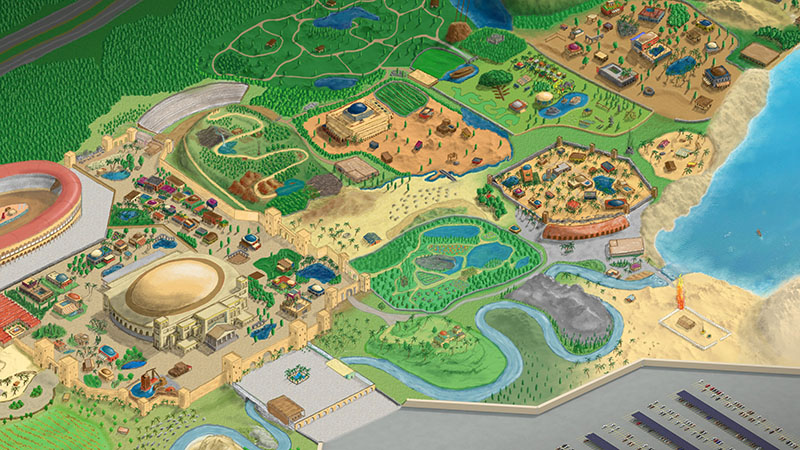
The vision shall be referred to throughout as the Park. It is a 120-acre theme park centered on the Holy Land in the First Century. Though not all features and events are specific to this time period, the overall theme and appearance will be such.
The Park includes five cities, seas and rivers, five mountains, and over one hundred building structures. Many landscape features such as fields, roads, and trails create a complete theme park that can support up to 50,000 visitors at one time.
It is laid out much like the real Holy Land west of the Jordan River, though the scale is not true-to-life. This discourse shall proceed through the Park beginning in the north and working southward.
I'm standing on the shore of the Sea of Galilee, refreshed by a gentle breeze is coming off the lake. Through the clear water I see sand and stones under the surface tapering off into the deep blue sea. It is pleasant and serene with small, gently rolling waves lapping at the sandy beach. The far shore seems distant, having landscape features that appear hazy and without much contrast or definition.
I see a wooden dock stretching out across the water. There is a fishing vessel moored to a post, its white sail retracted neatly to the beam atop the mast. People are boarding the craft where a first-century fisherman is guiding them and giving seating instructions. At the far end of the dock, passengers are disembarking from another boat. They are excited and talking enthusiastically about their voyage.
The dock is fastened to a dark, wooden-sided building. This is the Boat House, where boatwrights demonstrate their trade. Inside is a museum of historic articles related to fishing and seafaring. Nets, compasses, lanterns, ropes, and rigging adorn the walls and exhibit stands.
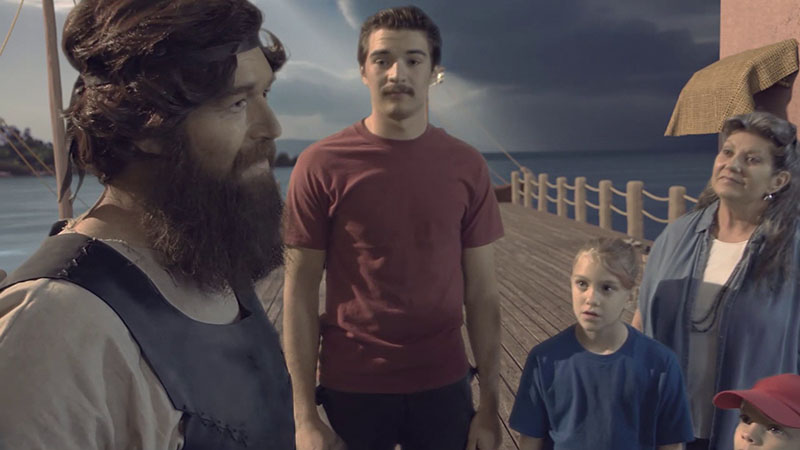
Out in front of the build a boatwright is at work on a partially finished hull with a pile of raw materials sitting nearby. Park guests are gathered around to watch and he recruits a few of them to assist in bending a plank around the ribs of the new craft.
Back at the dock, I see the loaded boat has departed and is making for the open sea, its sail ballooning in the breeze as the voyagers wave gleefully to those on shore. But little do they know what lies ahead. Their journey is destined to be anything but a pleasure cruise.
As they reach the middle of the lake, the captain suddenly spots a fast-approaching storm and orders the rowers to make for the shore. But the storm grows quickly and soon overtakes the doomed vessel. There is nothing they can do. Darkness closes in and the tiny craft is tossed about mercilessly on the violent waves. Drenching rain falls, blinding lightning and crashing thunder surrounds the helpless victims. The captain tries desperately to maintain control of the situation, but a splintering sound is heard as the mast cracks near the top, allowing the torn sail to fly freely in the gale. The rowers attempt to face the bow into the waves, but an oar suddenly snaps in one of the rower's hands and the craft is pulled sideways again by the dangling shreds of the sail. The captain reaches up high in an attempt to release the thrashing fabric when the boat is rocked sharply by a giant wave and he falls overboard.
Just when all seems lost, a faintly glowing figure appears on the water walking toward the paralyzed vessel. He reaches down and pulls the floundering captain out of the waves, then they both board the craft. He looks around at the waves and storm and commands, "Peace! Be still!" As quickly as it materialized, the storm vanishes. While they head back to the dock, Jesus rehearses the story of his own disciples being overtaken by a storm on the Sea of Galilee.
Farther up the shoreline from the dock and Boat House, I see the bow of a large ship partially buried in the sand, its deck sloping gently into the water. This is the remnant of what was once a terror to the naval foes of the Roman Empire, a trireme warship. There is a gaping hole in the side where curious visitors are stepping in to explore this unique structure. Portholes below the water level give them an underwater view of the sea and the marine life that inhabits it. Some have found their way to the upper deck and rummage through the fascinating articles found up there. The mast is broken partway up, its top lying on the shore just above the water line.
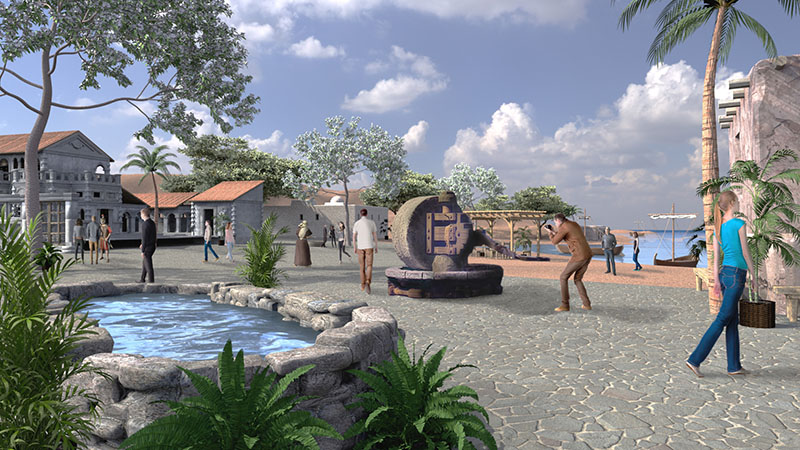
I look westward to behold the fishing village of Capernaum. It is here where the cultures, traditions, and way of life for the inhabitants of the first-century Holy Land may be experienced and explored. I see light, earth-tone buildings of varying hues, mostly stucco-sided with a few domed roofs.
Near the shore I see Peter's house, a well-known fisherman from the area. His humble dwelling and its simple furnishings tell stories about the tough life of making a living on the sea. His kitchen is a "fish-n-chips" styled restaurant, and visitors are sitting around the house enjoying tasty dishes made from a fresh catch.
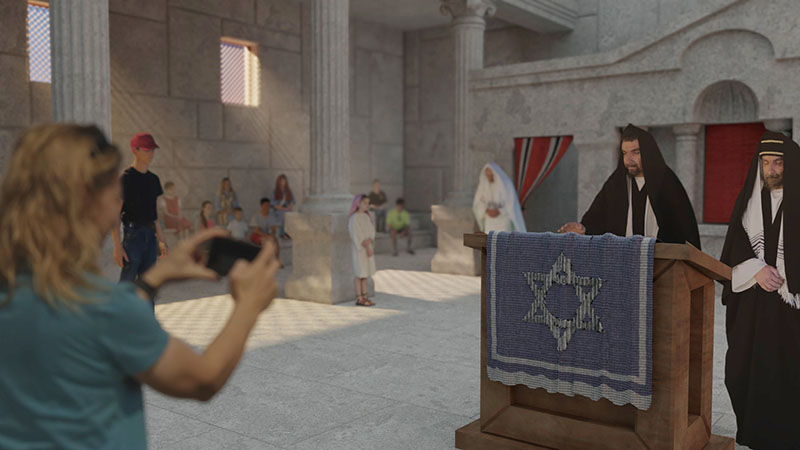
Beyond, I see a stately, stone building with a hint of Corinthian architecture influence. It is the Synagogue, a place of both worship and social events for the community. It houses the Scriptorium where ancient scrolls are copied, archived, and retrieved for special readings. Visitors peruse the tall, lengthy shelves of scripts, or listen to an oration given by a scribe or town leader. Often times, a discussion can become quite animated amongst the citizens, and visitors are encouraged to interject or ask questions concerning matters of politics, religion, and the issues surrounding daily life during this time period.
Near the Synagogue is Matthew's house, an elaborate building flaunting the lavish lifestyle of the despised Jewish tax collectors. There are numerous rooms, each decorated with upper-class furnishings of the day and containing a wide variety of trinkets and treasures, some hidden, some in plain view. This arrangement forms a scavenger hunt activity for the visitors, who are scanning the shelves and checking drawers for the next clue to open a chest or secret door.
I see a luxurious Roman Villa, the home and grounds of a Roman Centurion. Guests check out the architectural wonders and unique Roman innovations of the structure and enjoy a full-course Italian meal on the paved courtyard.
Beside the Villa is the Garrison, a fortress of stone and wood. I see the barracks, a long hall, the armory, and other buildings around the perimeter. In the open center of hard-packed earth, ranks of soldiers practice formation drills and maneuvers. They break away neatly into two groups and soon the air is filled with clanging sounds of metal-on-metal as they engage in mock battle. Looking around I see a few other soldiers polishing their armor and weaponry while interacting with the visitors.
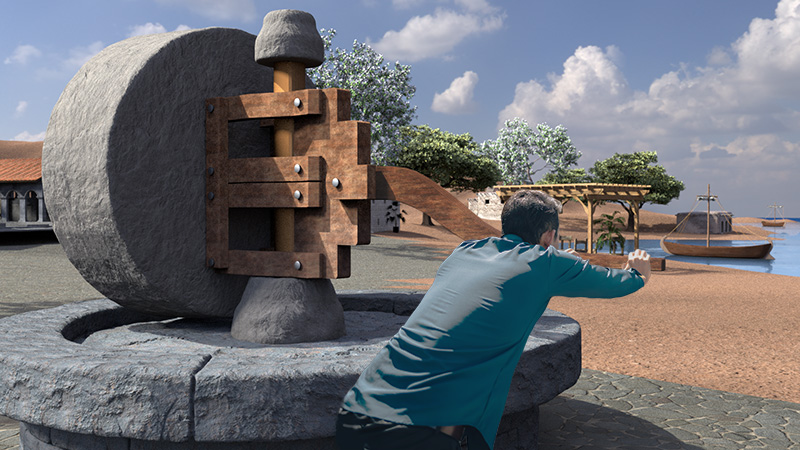
In the center of Capernaum is a large stone grinding mill where visitors try their hand at crushing grains into flour. Gathered around the Customs Booth near the village entrance are themed characters engaged in a heated discussion about the heavy taxation imposed by the Roman occupation during this time era.
Beyond the Booth is the three-dimensional maze of the Capernaum Ruins and a small oliveyard where people are gathering the olives and producing oil and other products from the fruit.
Venturing out of Capernaum, I come across a wide, shallow valley. A battered and unoccupied fortress stands on the other side and numerous stones litter the slope. Suddenly, a large stone flies overhead, landing a powerful blow to the top of the wall. A cheer erupts behind me. Turning about, I see a row of catapults and trebuchets aimed at the doomed target. Park visitors are loading stones into the slings and turn large crank wheels to position the war machines for another shot.
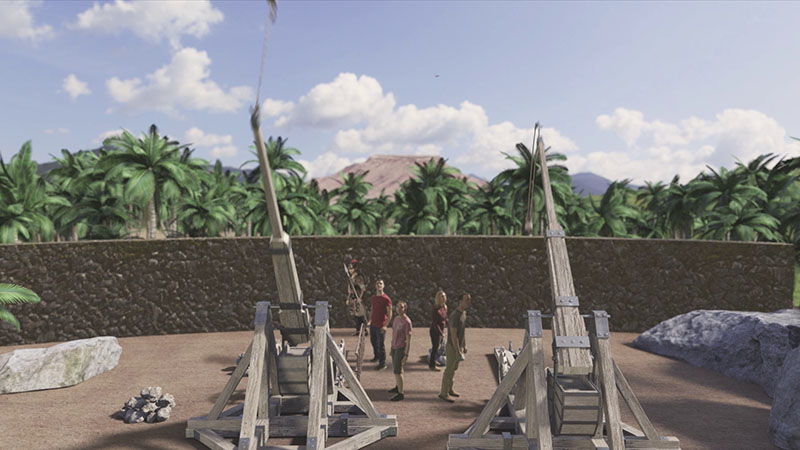
This is the Firing Range, part of the Warfare area where all types of weaponry and mechanisms from ages past are demonstrated and operated. On a wooden stage, two fully-equipped soldiers explain their armor and how it is used. Then they engage in a simulated conflict, performing maneuvers of hand-to-hand combat from centuries ago.
Behind them I see several long cages of mesh fencing, each enclosing a different type of vegetation from a tropical forest to a shrub savanna. A themed character gives instructions to a group of seven or eight visitors who are gathering stones from a shallow stream. They all have a shepherd's bag and a leather sling. After choosing their projectiles, they each enter a cage and begin searching cautiously for a predator lurking in the shadows. In one cage, a boy spots a lion casually walking toward him, sniffing the foliage nonchalantly and unaware of his human presence. The boy ducks partly behind a shrub and begins twirling his sling nervously. He stands and quickly releases the stone which bounces off the ground and hits the lion's front leg. Startled and alarmed, the creature lets out a surprised growl and crouches slightly, ears back and eyes wide. The boy wastes no time in releasing another pellet, which this time strikes the animal directly in the forehead. The animated beast crumples to the ground and the onlookers outside the cage cheer enthusiastically.
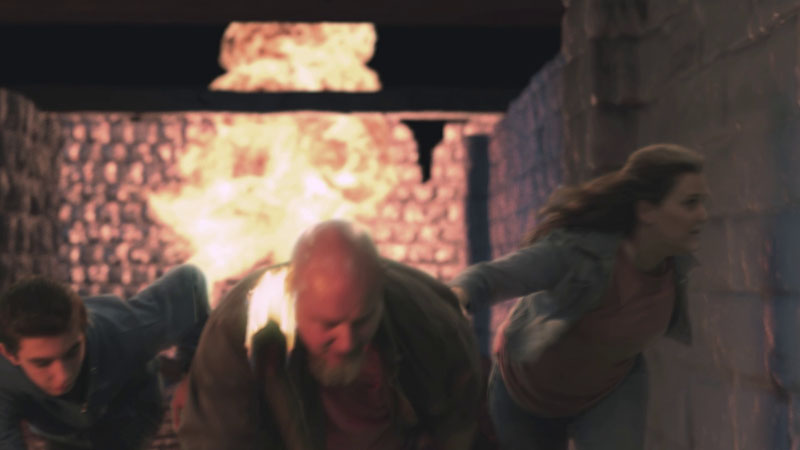
Nearby is the entrance to the Escape City, where participants attempt to break out of a battered city under siege. It is dimly lit by the simulated night sky overhead, supplemented with the flickering torch held by the adventurers. As they run through streets and open locked doors with a key they discovered previously, flaming projectiles from enemy war machines fall and shake the ground with thunderous explosions. Buildings crumble, blocking off alleys and passages that seemed to be the only way out. Desperately looking for another key or a rope or...anything, the fleeing victims are stunned to realize that the only way out is...UP; straight toward the flaming barrage coming at them. It takes wits, courage, and creativity to escape!

Moving south from Capernaum and the Warfare area, I enter the bustling town of Nazareth. This is the industrial center of the Park, where many ancient trades are practiced and much productivity is happening. There is a waft of smoke in the air from a craftsman's fire as first-century traders and merchants walk everywhere, carrying goods and wares between buildings and wagons. Visitors are absorbed in the bustle and try their skill at the many vocations exhibited, or lend a hand unloading a wagon.
There is a main avenue through the village with smaller side streets between buildings. The center of town is a wide open space where the craftsmen take portable pieces of equipment outside their shops to encourage direct interaction with visitors.

I hear the ring of a hammer on an anvil and turn to watch a man forge a piece of red-hot iron into a harvesting tool. Using special safety gear, I see a park guest take up the hammer and lay a few blows to the heated metal under the careful direction of the blacksmith. Just across the way is a potter, kicking the stone below his wheel as he forms a vessel from soft clay. Around him are several other wheels where visitors are taking turns trying their hand at the craft.
I see another hammer being swung, this one by a stone carver who is fashioning an elaborate capital for a pillar. Its intricate scrollwork and fine detail reveals the skill of the carver and awes the fascinated audience. He pauses his work for a moment as he picks up a small, flat chunk he just chiseled off the workpiece. He asks a little girl nearby what her name is, then proceeds to chisel her initials into the piece of rock. Beaming with great delight, she accepts the gift from his callused but gentle hand.

Many other trades and crafts are present here, from the fragrant apothecary in the Balm of Gilead, to the beautiful artwork coming out of the glass maker's furnace, to the unique and amazing designs of the basket weaver's creations.
But no civilization is complete without the carpenter. The shavings that litter his shop floor radiate a pleasant aroma to all who enter. The sound of his mallet on a chisel draws the visitors' attention to his skillful hands as they craft a masterpiece. His shop is more than a workplace; it is more like a museum, adorned with many interesting and intriguing articles and tools that have shaped this fundamental industry through the millennia. Most household items are present on the showroom floor, from complete bed sets to tables with chairs to gardening tools and cooking utensils. Many building elements are also products of his trade, including floor planks, wall panels, and elaborately carved doors and cabinets.
Leaving Nazareth, I come to the Playground, a feature much more elaborate than a typical city park. There is traditional playground equipment such as swings and slides, all themed as animals or styled with first-century elements. I see a large, animated brontosaurus looking down into a stroller, producing squeals of delight from the toddler. Nearby is a pavilion with a large sand pool where children are building sand castles. There is a mini-golf course, a themed bowling alley, a Jericho Blocks building area, and a set of small beanbag catapults. A large, fallen tree trunk with numerous limbs creates a crawl-through labyrinth, and before it is a tall, sprawling tree containing Zacchaeus' Tree House.
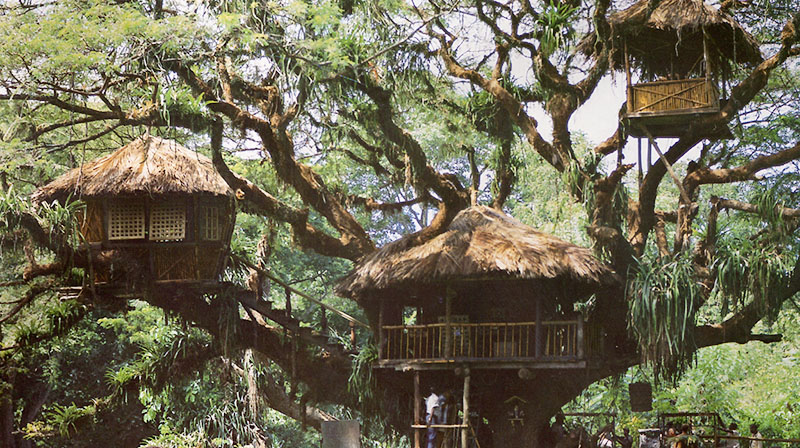
The Tree House is comprised of three individual huts, reminiscent of the Swiss Family Robinson story. The two upper rooms are accessed by wooden stairways from the main house and are connected to each other by a rope tunnel. I see children and adults climbing and exploring the houses or playing games and reading books from the activity shelves.
In a far corner of the Playground, I see a sizable Noah's Ark surrounded by a pool of water. Inside is a reptarium and aquarium while the top level features an aviary with a complete walk-around deck. On the other side of the Ark, a large petting zoo thrills visitors with a wide variety of small critters and baby animals, from common calves, dogs, and cats, to exotic animals and lesser-known species.
The Playground also houses a half-sized first-century village, scaled for younger children to explore. There is a market, numerous homes, craftsman shops, and other features of the Park on a miniature scale.
Beside the Village is a tall wooden platform supporting several sets of zip lines. They are not fast thrill rides, but rather tell stories of major historic events. On one line, I see a rider flying over the ranks of an army outside the walls of a besieged city. Upon reaching the end of the line at a stone tower, he is connected to a lower line for the return trip. This time, things that were passed over are now passed through. The rider soon finds himself gliding a few feet above the streets of the city where soldiers and defenders clash in battle.
A large picnic park completes the Playground area with a dozen or more trails that wind around shallow hills dotted with picnic pavilions. Patches of shade trees, ponds, streams, fountains, waterfalls with stone and wooden bridges create a serene setting for a peaceful break.
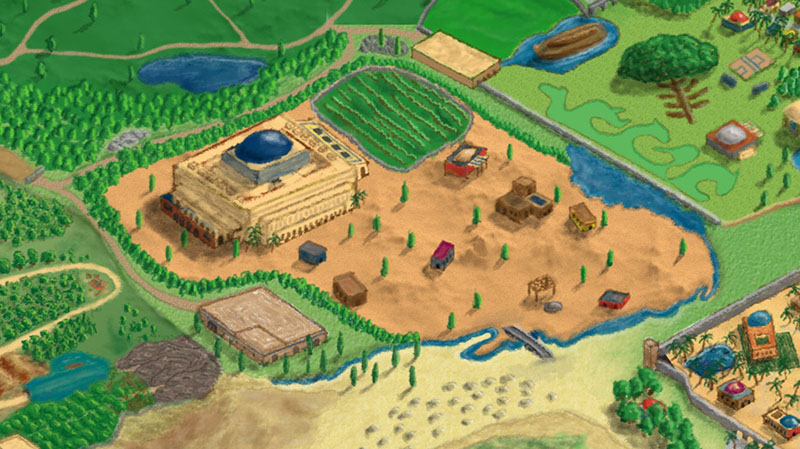
Moving on from the Playground I come upon Samaria, the hill country of the Park. It is not a town or city but rather a region where several significant events took place thousands of years ago. I see Ahab's Palace of Ivory, an elegant building of intricate architectural work. It houses one of the seven theaters in the Park, playing fascinating scenes and stories from ages past on a professional stage. Beside the Palace is Naboth's Vineyard with its long rows of vines hedged about by a low stone fence. An exhibit nearby tells the incredible story of the plot against Naboth and the ultimate fate of his accusers.
An ancient water well sits near the main footpath through Samaria. It is Jacob's Well, a major landmark in the ancient Middle East related to a number of important historic events. Some of these are retold or played out in minor dramas by themed characters. Another well nearby is under construction and visitors are encouraged to participate in the digging and lining of the hole.
Samaria was also the home of a man known as Simon the Sorcerer. Inside his house, the sinister secrets of this dark but very real craft are discussed in a sensitive, non-disturbing way.
From above the low vegetation by the banks of the Jordan, I look skyward toward the east to see a billowing column of white cloud. It is thick and boiling, appearing to fold in upon itself as it mysteriously hovers stationary over some point beyond the river.
Passing through the Jordan Crossing, I come upon the source of the lingering pillar. It is the Wilderness Tabernacle, a place of ancient worship complete with all the furnishings and equipment. Priests clothed in their curious garments roam about performing their ritualistic duties.
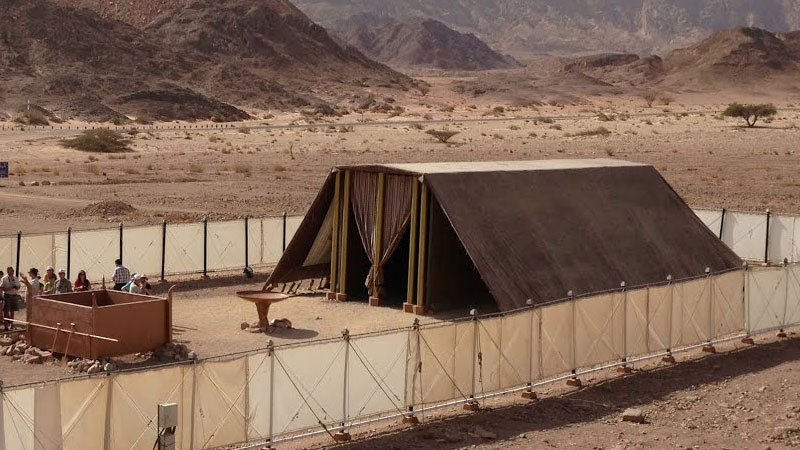
This area is Shiloh, the place where the Tabernacle rested for over 300 years until the Temple was constructed in Jerusalem. Talks, dramas, and tours of the facility give visitors a thorough insight into the operation of the Tabernacle and the religious activities that occurred there.
I see a themed character and his son weaving their way through the audience as they lead a lamb to the entrance. A priest meets them there and after a brief conversation they walk to the alter together. Through dramatic song and dialog, the actors convey the concept of sacrifice and redemption.
At dusk, the cloud begins to flicker with a faint reddish color. As darkness falls, the cloud slowly transforms into a column of fire in the night sky.
Emerging from an outlet on the Sea of Galilee, the winding Jordan River carves its way through the Park as it flows toward the Dead Sea.

Not far from its origin, I see the Jordan Crossing, an awe-inspiring experience of bewilderment and wonder. People are standing on the bank, listening to a themed character as he rehearses historic accounts of the river miraculously parting to allow passage. When he is finished, he turns to the flowing waters and raises his arms dramatically. A low rumble is heard. The surface of the water lifts slightly then rolls back and parts, revealing a walking path to the other side between two walls of water.
Float trips down the Jordan to the Dead Sea can be made in vessels resembling first-century canoes. Under the entrance plaza, the flowing river guides floaters through a tunnel that is dimly lit with fiery torches.
Beyond the tunnel, the river sweeps around a small hill with grassy slopes and rocky ledges. It is the setting for the Jordan Drama Area. I see a man submerging himself over and over. The man's skin is blotched with leprosy and he looks ill. Soldiers standing on the hill cheer him on. Spectators scattered on the sloping river bank watch as the story of Naaman the Syrian unfolds with poignant music and heart-wrenching cries of desperation from the ill army commander. The crowd gasps in awe as the man rises from the water one final time, his skin miraculously restored and clean as new.
Known in the ancient world as the "City of Palm Trees", Jericho lives up to its name with tall fronds everywhere.

One wall of the city is an engineered structure and has a themed grandstand shrouded by palms. It is here where the story of the Israeli spies and their encounter with Rahab plays out. I see them escaping the city through her window and returning soon afterword with the host of Israel. The mighty king of Jericho stands on the wall and scorns their feeble army. But his tone changes as a wall support pillar cracks and crumbles to the ground on the left. A shout from the right draws attention to a soldier dangling from the wall as a small portion of it also falls away. Suddenly, the whole scene begins to quake, the ground shaking with a thunderous rumble. The conquest of Jericho has begun. On the front row, the audience's awe turns to alarm as they realize the entire wall is about to come down...and they are too close! The wall collapses, but they are perfectly safe as pieces of it tumble at their feet and into the aisle.
After the exciting act, I venture into the city to find it themed according to the story I just saw unfold outside. There is the spy adventure, where visitors attempt to evade capture in the darkened streets while making their way to a rappelling tower. I see Rahab's house and a factory manufacturing a variety of flax products that Jericho was known to produce. There are the Winter Palaces, homes where the wealthy and nobility of Jerusalem dwelt during the cold months. Each palace is an escape room with a unique combination of treasures and artifacts to solve the puzzle.

The Earthquake Ride with its train of carts traverses the streets of the city while the buildings and walls shake from the tremors. Jericho was known for its many quakes, and this ride certainly brings it to life. Structures collapse, dust billows, and people run in fear. Then the unthinkable happens. The ground cracks open and both carts and riders plunge into darkness.
Once underground, an entire adventure awaits them as they navigate through a cavern rocked by the quake. Finally, the tremors cease and the ride comes to a halt on a high plateau surrounded by a panorama of serenity. With a beautiful night sky above them and a peaceful, moonlit sea around them, it seems the turmoil is over. But then a booming voice sounds, "Yet once more, I shake not the earth only, but also heaven."
Seemingly impossible, yet happening, the very heavens begin to tremble and the stars themselves reel in the skies, some colliding and sending colossal shockwaves through the universe while others fall to the earth, causing massive tsunamis and thunderous impacts that dwarf the earlier experience.
Jericho is the hometown of Zacchaeus, who climbed a sycamore tree just to catch a glimpse of Jesus as he passed by. The story happens directly amongst the crowd of visitors as they unknowingly suppress a blind man from reaching Jesus. In despair and desperation, he cries out above the noise of the throng. Jesus, taking control of the situation, quiets the crowd and calls the man to him. He then miraculously restores his sight before the audience who look on with wonder and amazement.
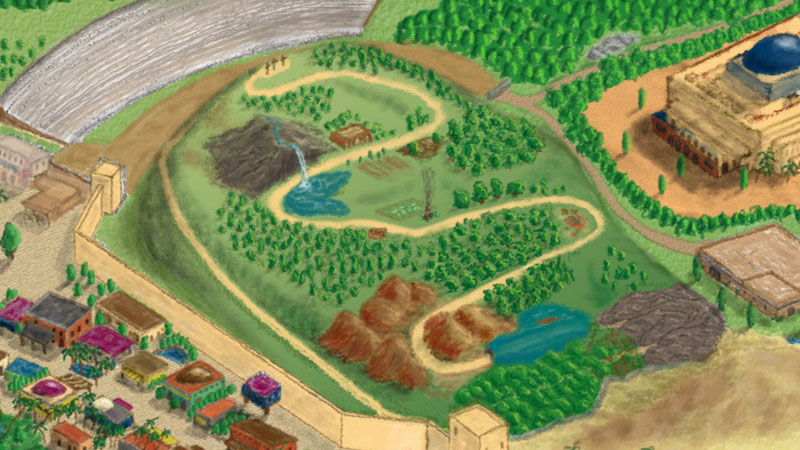
Just north of Jerusalem is the Hill of Calvary with a winding trail weaving up its gently rising slope. Along the path are numerous exhibits and stages, each one conveying a specific theme or event.
I start up trail in a lush garden with a canopy of trees overhead, depicting the Garden of Eden. But soon the tranquil setting turns harsh with dead trees and barren soil; death has entered the once perfect world. At the first bend, I encounter the Valley of the Shadow of Death, a chasm as eerie as it sounds. Moving on quickly, I come to the next event: Noah's Flood. It is immersive, with geysers erupting and a wall of water suddenly flooding over the clear tube tunnel I am walking through.
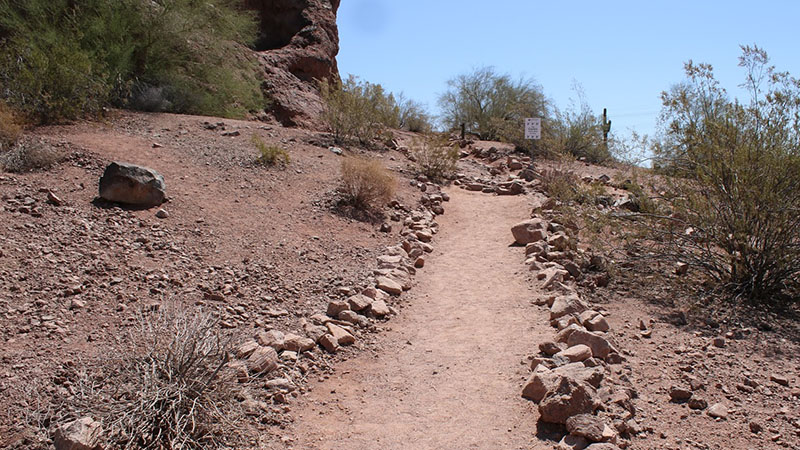
At the next bend I make my way over a rocky pass in the fiery, smoldering cliffs of Mount Sinai. This is the place where the Ten Commandments were given. From there I come across scene after scene of people throughout history vainly attempting to appease God after violating the Commandments. But it seems to be no use, the ultimate penalty for breaking the law is death.
As I finish my journey to the top of the hill, I encounter the cross where Jesus died. It is a sorrowful setting, with scenes and plaques explaining his love and the purpose of his sacrifice for all humanity. But it doesn't end there. I descend on an elevator-like platform below the cross to a tomb carved into the rock. There is a stone bench where a person would be laid and the grave clothes they would be wrapped in. But the tomb is empty.
Exiting through the door cut into the hillside, I follow a path back down the hill surrounded by exhibits telling the account of Jesus' death, his resurrection three days later, and the reports of hundreds of eyewitnesses from the days following that miraculous event.
Just beyond the cross, the hill drops off steeply and forms the face of a large outdoor stage in front of tiers of curved seating for a few thousand spectators. Various performances occur on the stage throughout the day, and at dusk the Passion of Christ plays out in a very real and dramatic way.
I'm standing outside the city at the main entrance plaza. The pavement is of large, polished stones arranged into attractive, ancient Middle Eastern designs. A large granite fountain sits in the center with multiple cascades and elegantly carved stone figures of lions, horses, eagles, and others that represent power and grace.
To my left is the General Store Restaurant. It is an outlet for the many wares and products produced by craftsmen and merchants in the Park. The sit-down restaurant serves full meals in a "first-century, middle-class" style. On the right are ticket booths, a visitor information center, and restrooms.
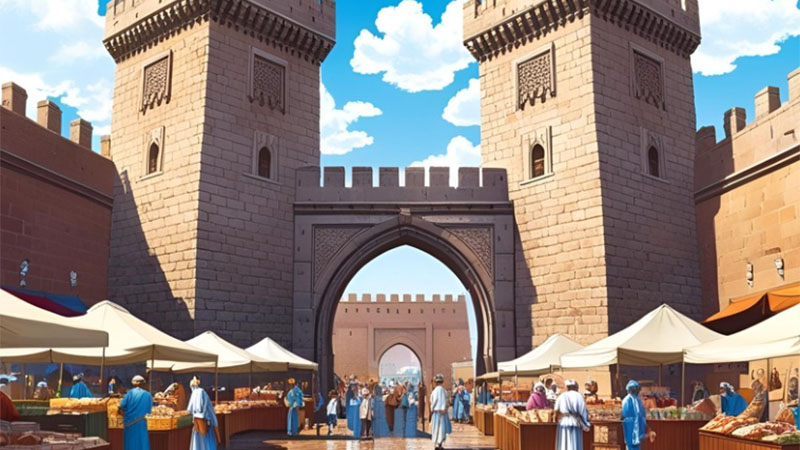
Beyond the fountain, the entry gate of Jerusalem is a sight to behold at over 60 feet high and made of large stone blocks. It is anything but plain, with stately features and tall columns crowned with intricate carvings. Part of an ancient Psalm is etched into the stone over the arched gateway: "Enter Into His Gates With Thanksgiving, And Into His Courts With Praise". Numerous such inscriptions are found throughout the Park. Looking through the entry gateway I see a plethora of colorful, ornate buildings and domed roofs.
Outside the northeastern wall of the city is the beautiful Garden of Gethsemane. It is a world-class botanical garden, complete with paths, pools, fountains, stone formations, and supportive wildlife.

To the east of the city rises the landscape of Mount Olives. I see people gathered on the slope, some sitting on the ground, others sitting on rock protrusions that jut from the hillside. Before them, I see a themed character of Christ reciting the Sermon on the Mount and giving a dramatic and moving rendition of the classic Lord's Prayer song. Other characters dressed as the Disciples distribute pieces of bread to the audience from baskets that seem to have no end; there is plenty for everyone and more to spare.
At the very top of the hill shrouded by vegetation is an enclosed exhibit called The Return of the King, an immersive portrayal of the ascension of Christ from the summit of Olives and his future return. At the base of the mountain on the south side is a path leading past tombs cut into the side of the hill. Some are closed off with large stones, others are open and unoccupied. In them, a brief explanation of the traditions and methods of ancient burial are discussed.
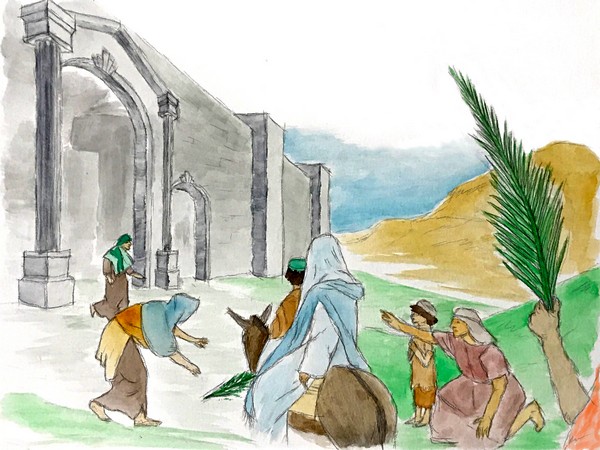
After Christ has finished his discourse on the hillside, he invites the people to follow him to Jerusalem. Before reaching the Eastern Gate, he mounts a donkey and proceeds through the giant archway amid a throng of cheering crowds waving palm leaves.
Soon after the din of the triumphal entry has quieted and the crowd dispersed, I see across the way the Pool of Bethesda. Numerous characters are lying haphazardly around its court or propped up against poles supporting makeshift shades. Park visitors mill about, talking in hushed tones as I wonder what is going on. Suddenly, without warning, the waters of the pool become turbulent and foamy. The previously listless characters spring to life and chaos erupts as they crawl and stumble over one another in a frenzy to get to the pool. From behind, a man bumps me as he staggers toward the sound of the fray. As he shuffles past, I catch a glimpse of his eyes. They are cloudy and white and I realize instantly he is blind. I feel bad for having been in his way, but he seems unconcerned and nothing stops his headlong dive into the pool. More splashes ensue as others dive or stumble into the waters, which have already ceased to be agitated except by the entering mob. A joyous shout erupts from the man as he jumps out of the water. He looks directly at me. His eyes are perfectly clear, a striking contrast from just a few seconds ago. He has been healed.
Beyond the pool I spot a cluster of colorful booths and structures. It is the Market Street where traders and craftsmen peddle their wares. The atmosphere is lively and festive as minstrels play their tunes hoping for a tip and vendors barter with visitors. Rugs, clothing, jewelry, pottery, wooden articles, even items made of real gold and silver are among the vast array of products offered.
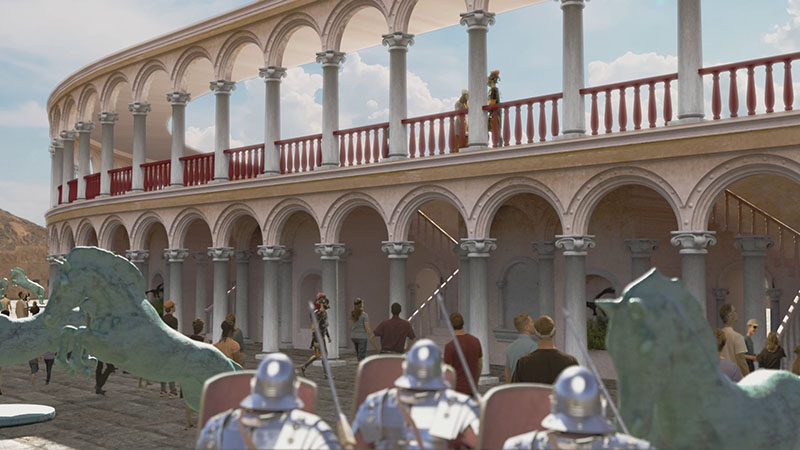
Exiting the Market, I am astonished at the sight before me. It is the colossal Grand Stadium, a magnificent Roman hippodrome seating over 5,000 spectators. Cheers from the crowd can be heard as people flock through the arched entries. A wildly exciting competition is going on with teams of horses pulling chariots in a heart-stopping race that reminds us of the epic scenes from Ben-Hur. Clouds of dust, flying dirt, thundering hoofbeats, wind-blasted charioteers, and chariots skidding around corners put the audience on the edge of their seats unlike anything they've ever seen before. But there's more to the story than that. It is a full-length production complete with stunts, swordfights, and unexpected twists along the way. The viewers are taken on a rollercoaster ride of emotion and excitement in a classic good-versus-evil drama.
While the show is not happening, visitors are welcome to take a lap or two around the stadium in a horse-drawn chariot with a Roman soldier.
Outside the Stadium, I scan the area and see many shops and homes that exhibit the trades and occupations of the First Century. There is the scribe's house, a stately Roman-styled building containing the stories and methods of ancient writing techniques and scribal work. Visitors are welcome to try their hand at copywriting a manuscript onto papyrus or search for a specific event in the scrolls of history.
The Pharisee's house is an upper-middleclass home portraying the life and role of the religious leaders of the day. I see Luke the Physician's house where discussions and artifacts of ancient medicine are displayed. The Fine Fibers shop exhibits silks and exquisite tapestries created by masters of the trade. Nearby, the Rose of Sharon flower shop adjoins the Light of the World lamp merchant.
The Temple, a magnificent building with towering pillars and tall arched wooden doors, sits at the very heart of the city. It houses a 1,500-seat theater where gripping stories from history play out on the large stage complete with professional actors, animals, immersive music, and special effects. Around the outside perimeter of the theater room is a jaw-dropping museum showcasing artifacts, events, and relics from the ancient times. The floor is of polished stone, the walls of wood carvings, arches, and many elaborate insets. It is the most elegant building in the Park.
Beneath the Temple on a subterranean floor is Esther's Banquet Hall. It is the finest of the fine, with luxurious furniture and fixtures throughout. Intricate architectural features are accented by ornate tapestries flowing across the numerous archways of the balcony.
Near the Stadium, I see the red-tiled roof of Solomon's Stable. A grassy courtyard is encompassed by wrought iron fencing and open gates. A large indoor arena where horses are worked and trained sits in the center of the building. Visitors watch the training sessions from a high balcony that completely surrounds the arena or explore the many artifacts and ancient tack that adorns the room. Below the balcony are the stalls, where guests are petting horses and engaging with the trainers.

In a corner of Jerusalem, I encounter an ancient building site and a pool of water. This is the Tower and Pool of Siloam. Wooden beams and rough-sawn timbers lie scattered about, and a fiery kiln bakes soft clay into hardened bricks. The construction site demonstrates the various systems and practices used to build structures in ages past. The tower is tall and unfinished, with some sort of wooden crane erected nearby. People are harnessed into seats fastened to a wooden platform. This is obviously some type of ride-through experience. The platform is fastened to ropes dangling from the crane, and soon the riders are hoisted to the top of the tower where they are lowered inside for yet another adventure. Their descent ultimately takes them to explore Hezekiah's tunnel under the city before returning to land in the Pool with a splash.
Immediately outside the southern gates of the city is a large desert tent set on a sandy flat before a series of sand dunes. Weathered nomadic characters offer the visitors camel rides across the dunes to experience their way of life in the wilderness.
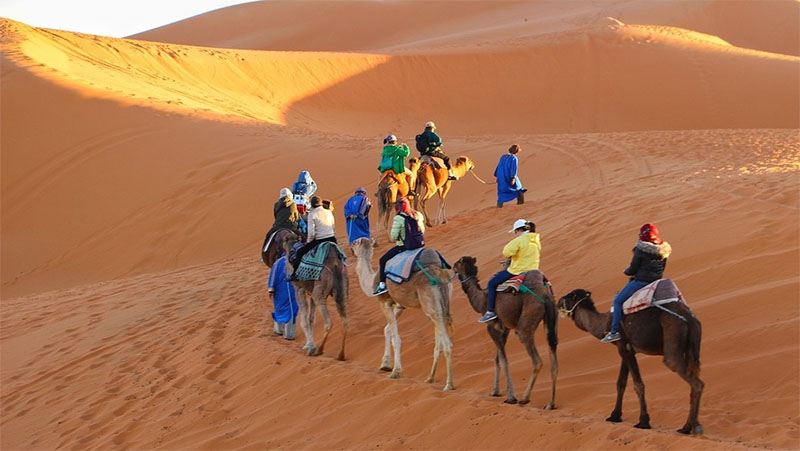
I see a train of camels setting off on a trail between two tall dunes. A guide leads them through the barren desert landscape for several minutes, navigating around taller dunes and over smaller ones. At last, the travelers reach a beautiful oasis with palm trees, a pool of clear water, and desert vegetation and rock formations.
Another large tent featuring elongated hanging rugs and several rooms sits near the pool. The nomads offer a tour of their humble dwelling and show off the trinkets and artifacts from their travels and trades. Refreshments are served before the guests mount their camels and journey back to the Camel Ride entrance.
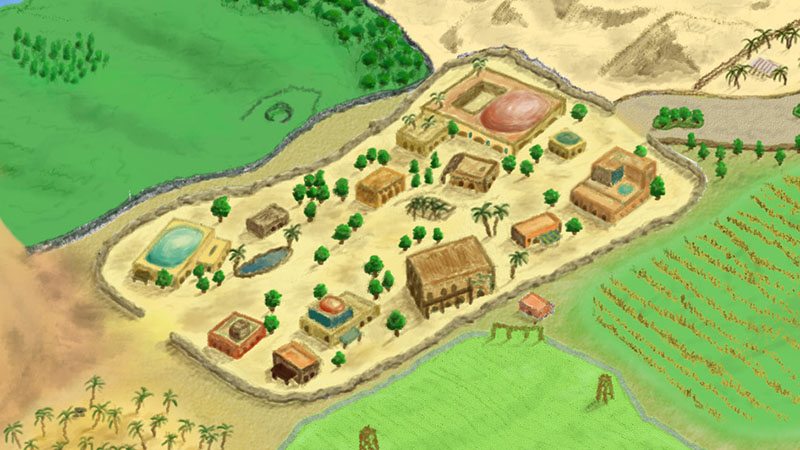
The comforting hues of Bethlehem accent the simple style of arched doorways and stucco buildings. Quaint homes with their simple flat roofs and exposed wooden beams sit just down the street from the larger establishments and their shallow-domed roofs.
The town is charming and looks like it came straight out of a Christmas card. I feel at peace in the surroundings as I take in the sights and sounds filling the streets. Tradesmen and women ply their crafts and products along the sides of the streets and their associated shops.
A weathered man works a leather hide while a weaver shoots her shuttle through the warp strings on her loom. A shepherd leads a small flock of sheep down the street. A snowy fleece is piled next to a woman as she spins the fibers into fine yarn. A beekeeper harvests mouthwatering, amber honey dripping from a fresh cut of comb. Visitors mill about the activities, interacting with the characters or purchasing their wares.
Small alleyways weave amongst the buildings, creating quiet alcoves with tables and benches for enjoying a meal or resting in the shady areas. The hard-packed earth of the main street running through the center of the town creates a large common area. I see captivating, interactive dramas taking place throughout the day as visitors gather around the open area and become part of the stories. Looking north from the main road, I can see the southern gates of Jerusalem, while glancing south reveals the Desert Plains leading to Mount Sinai.
On the east side of the town center, the imposing two-story Inn Restaurant presents a rustic setting with rich, dark woods, exposed wooden beams and posts, and planked floors. It exhibits a sense of class and finesse throughout. From the upper level dining room I can overlook the entire common area. Large open windows with flowing sheer curtains provide diners a perfect view of the scenes and activities on the streets below.
From this elevated perch, I see an open building with a large stage area in front projecting into the common area. Christmas productions and other events or sideshows take place here. Nearby is the Dairy where cheeses, butter, and a vast selection of other dairy products are produced using ancient methods and tools.
Directly across from the Inn is the grand building of the Shepherd Experience. Inside, visitors are presented with a variety of events and activities that expose them to the climate, hazards, and way of life a toughened shepherd will face. A visitor standing on a slightly raised platform surrounded by a stone wall swings a wooden staff at attacking wolves visible only to him in the VR headset he is wearing. Force feedback on the staff and puffs of air augment his immersive experience.
To the right is a large exhibit area where artifacts and tools of the shepherd's trade are allowed to be handled and demonstrated. Beyond is a darkened passageway leading to a room where the chill of the wilderness night is felt while stars twinkle on the domed ceiling overhead. There are shrub bushes and large rocks scattered about, and on one wall is a variety of desert creatures behind glass similar to a zoo exhibit.

Outside the Shepherd Experience I see goats, sheep, cows, and other livestock roaming lazily in covered pens, enjoying attention from the visitors. A couple of women with pails are milking Jersey cows and interacting with curious onlookers.
Beyond the stalls, I come upon a green pasture on the west side of the road. Large rounded stones create a low wall around the field. Lush grasses and shade trees continue into the rolling hills beyond. A shepherd tending his sheep talks to the guests about his challenging life in the great outdoors. He gestures toward the sheepfold and explains the stone structure where he brings the sheep at night to protect them from predators.

As he speaks, a wolf howls. Suddenly, a pack of wolves are spotted dashing across the hills toward the vulnerable flock. Immediately, he leads his sheep into the fold then assumes a guard stance at the entrance. The wolves descend on the scene and he swings his staff aggressively at the ravenous attackers. Snarling and lunging, they try over and over to break through the fearless defender. But a few moments later, the shepherd gives a calm command and the wolves immediately lay down at his feet. He explains these animals are well-trained for demonstration purposes and rewards them with treats. The wolves and sheep then intermingle briefly while the viewers express amazement at their docility. With another command he sends the wolves off across the hills back to their den.
On the other side of the street from the pasture, fields and vineyards of corn, wheat, barley, grapes, and a citrus grove adorn the rolling hills. A low barrier of stacked field rocks topped with split wooden rails surround the fields. Some visitors climb the watch towers overlooking the grounds while others meander the rows and assist the period-dressed workers with pruning and harvesting. They bring the fruits in baskets and wagons to a building situated near the Inn.
The structure is extensive, featuring open-air spaces for processing the harvest. Rough-hewn arbors provide shade and beauty with their vines and coverings. Exposed beams inside sport drying herbs and fruits, while smoke drifts from a smokehouse nearby where meats are being cured and aged.
Many things are happening here. Grains are thrashed and separated. Berries are pressed. Honey is bottled. Juices are extracted and syrups are cooked down. Some people stomp grapes while others prepare fruits for drying, or are bagging grain to be taken to the mill in Capernaum.
During harvest time, Bethlehem is the scene of great excitement. The atmosphere is festive with music, joyful shouts of encouragement between the workers, and lively traditional dances. Visitors enjoy engaging in these activities and sampling the many flavors and products of the harvest.
South of Bethlehem, the landscape turns arid and dry. I am in the Southern Desert, a land of sand, rock formations, low scrubs, and a few crooked trees. In striking contrast to the surrounding environment, I see an oasis of seventy palm trees and twelve stone-hedged wells of water. This is Elam, a place of relief and refreshment for weary desert travelers in the ancient times. Some characters are milling about the visitors, telling stories of their travels and the experiences they encountered.
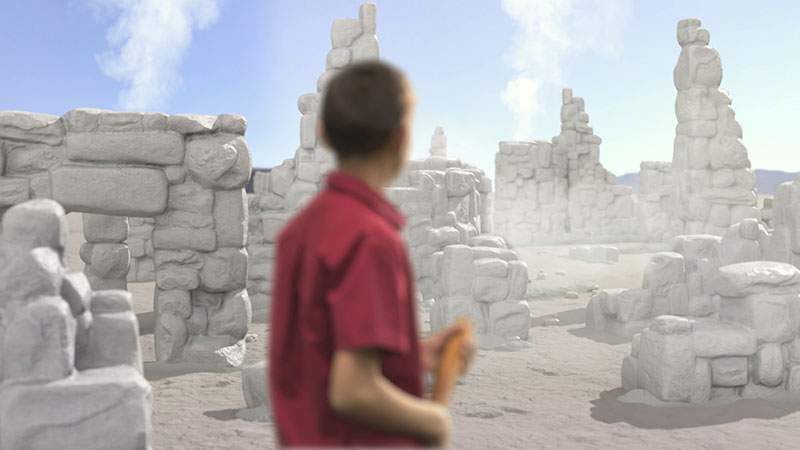
Between the Plains and the Dead Sea lies the smoldering ruins of what was once a settlement. I enter between two charred wooden posts and feel heat is still emitting from the shambles. This is the remnants of the cities of Sodom and Gomorrah, now a three-dimensional maze of collapsed buildings, walls, and blackened streets.
A sloping pathway leads underground where a modern, state-of-the-art special-effects stage and theater are located. The theater seats a few hundred people comfortably. The screen wraps partially around the seating, immersing the audience in the story being told.
It begins with a movie of Abraham and Lot parting ways and the events before the destruction of the twin cities. The screen goes dark, and the center of the stage becomes illuminated, revealing a model building.
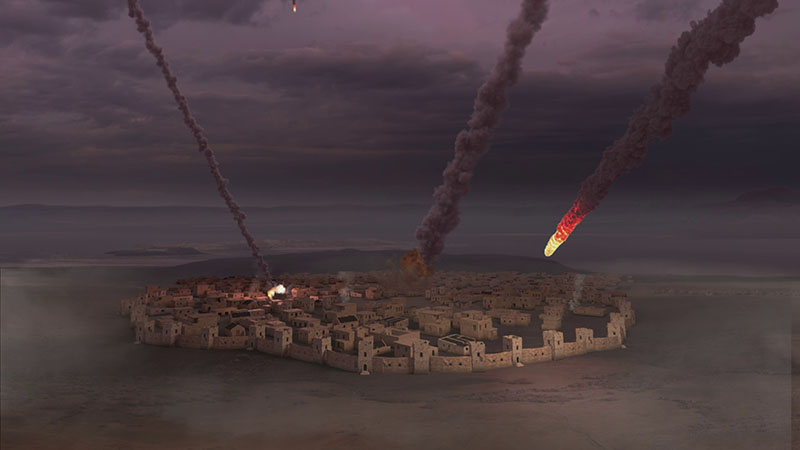
A small fragment of smoldering stone falls onto the stage. Then another one. Then another that is still flaming. As the scene unfolds, more fiery stones fall on the stage as the light continues to spread out, revealing that the audience is now surrounded by buildings and are sitting in the middle of a street. It is a spectacular show, heat radiating from the set and buildings caving in as they are consumed.
Across from the ruins is a playground with water jets erupting from the surface periodically and an assortment of activities and adventures for children. There are also sand dunes where I see people sandboarding down the slopes.
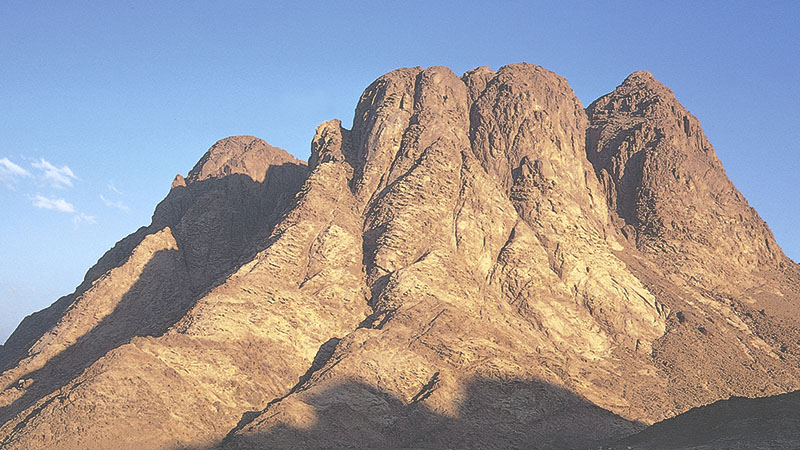
Mount Sinai is the most prominent feature in the Park, being visible for miles above the surrounding terrain. It is a landmark of 150 feet tall and periodically emits a thick plume of smoke. At night, mountain appears to be glowing with fire. It resembles its counterpart in Saudi Arabia, with a sloping base transitioning to sharply rising edges and numerous creases and folds. A wide, switchback pathway climbs all the way to the top, supplemented by elevators within the structure.
The top of Sinai is a slightly lowered basin with a maze of rock formations. An abnormally large one catches my attention. Walking around it, I come upon a theatrical stage area created by multiple ledges and layers of rock and vegetation. The seating is recessed into the large formation, which forms a sort of sheltered cove inside.
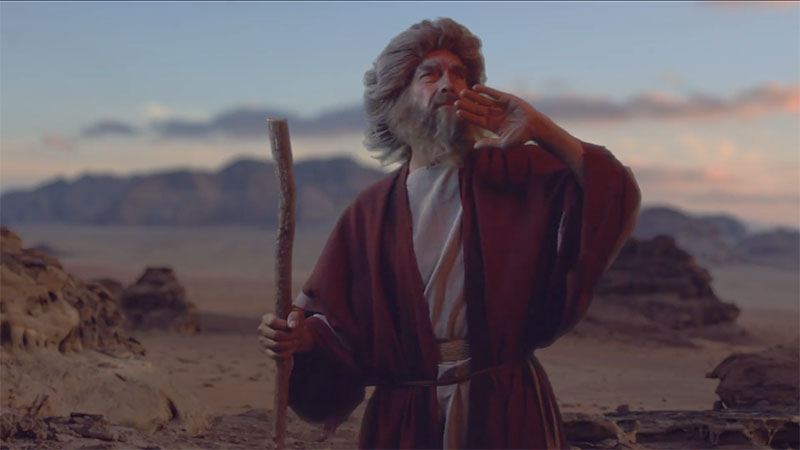
An energetic lamb trots around from behind the rocky stage and bleats. It then continues on its way across the stage and disappears around the other side. A few more sheep trot around the corner. Then more. Finally, the recognizable character of Moses appears. The story of his encounter with the burning bush and his subsequent return to the mountain plays out in dramatic fashion. Upon his return, the audience watches in amazement as the finger of God writes the Ten Commandments on a stone tablet.
On the north face of the mountain is a switchback water slide, taking riders from the top all the way to the bottom. It is invisible to viewers on the ground, being obscured by the rock mountain face theme and short vegetation. The ride begins with a gush of water from a rock that splits apart, then passes through several scenes of Israel's wandering in the wilderness.
Inside, the mountain holds a wide variety of attractions. At the top is the vast Commandments Activity Center. The entry is shaped like two stone tablets typical of the "Ten Commandments" profile. Inside, I see a bustle of activity in all directions. This is a huge area, the ceiling is completely black creating the sense of an infinite space.
Ahead and to the left I see the Commandment Climbers, columns of ten cubic blocks suspended by chains from the ceiling. An athletic man is partway up one of the chains. He is wearing a safety harness and is struggling to climb on top the next block. It is swinging precariously back and forth, limited only by a short length of chain anchored to the floor.
High overhead, a group of teenagers are standing on a balcony several stories up. In front of them is a bridge constructed of rope and wood planks. The closer planks are sound but the others become cracked or broken as the distance grows. The far end disappears into an eerie cloud of greenish-blue fog, reminding me of a scene from some movie of a rickety, fragmented bridge across a deep chasm to the unknown beyond. The group also has safety harnesses and one by one they attempt to cross over the swinging bridge.
Behind the Climbers, I see a hall leading to multiple escape rooms. Every room is centered around the Commandments, the correct key to each puzzle opens the next until success is achieved.
On the other side of the Activity Center, to a person's right as they would enter, is another room with many thought-provoking activities and engaging challenges to create a deeper understanding of the Ten Commandments.

Walking deep into the Center far away from the entry, I come upon a large, semi-tubular video screen forming a corridor. It is the queue line for the Exodus Ride. The story of Moses and the plagues in Egypt is shown and the movie climaxes with the mass exodus of Israel from captivity. As the movie shows a string of carts pulled by oxen passing across the scene to the right, real carts pulled by animated oxen appear from behind the screen in sync with the video. The train comes to a halt at the far end of the hall and the riders climb out of their carts. The next group boards and the journey begins. Similar to a dark ride, the wagon train immersively tells the story of Israel from the Exodus until they finally enter Canaan.
Below the Activity Center are the Commandment Coasters. They are five themed dark rides, each depicting two of the Commandments and their practical, contemporary applications by traversing through three or four real-life scenes where that concept is applied to a modern-world setting.
The lower floors of the Mount Sinai structure are the Park offices, construction and maintenance shops, utility and infrastructure mechanisms, storage, and other support functions.
Thus the vision is written. So may it come to pass.